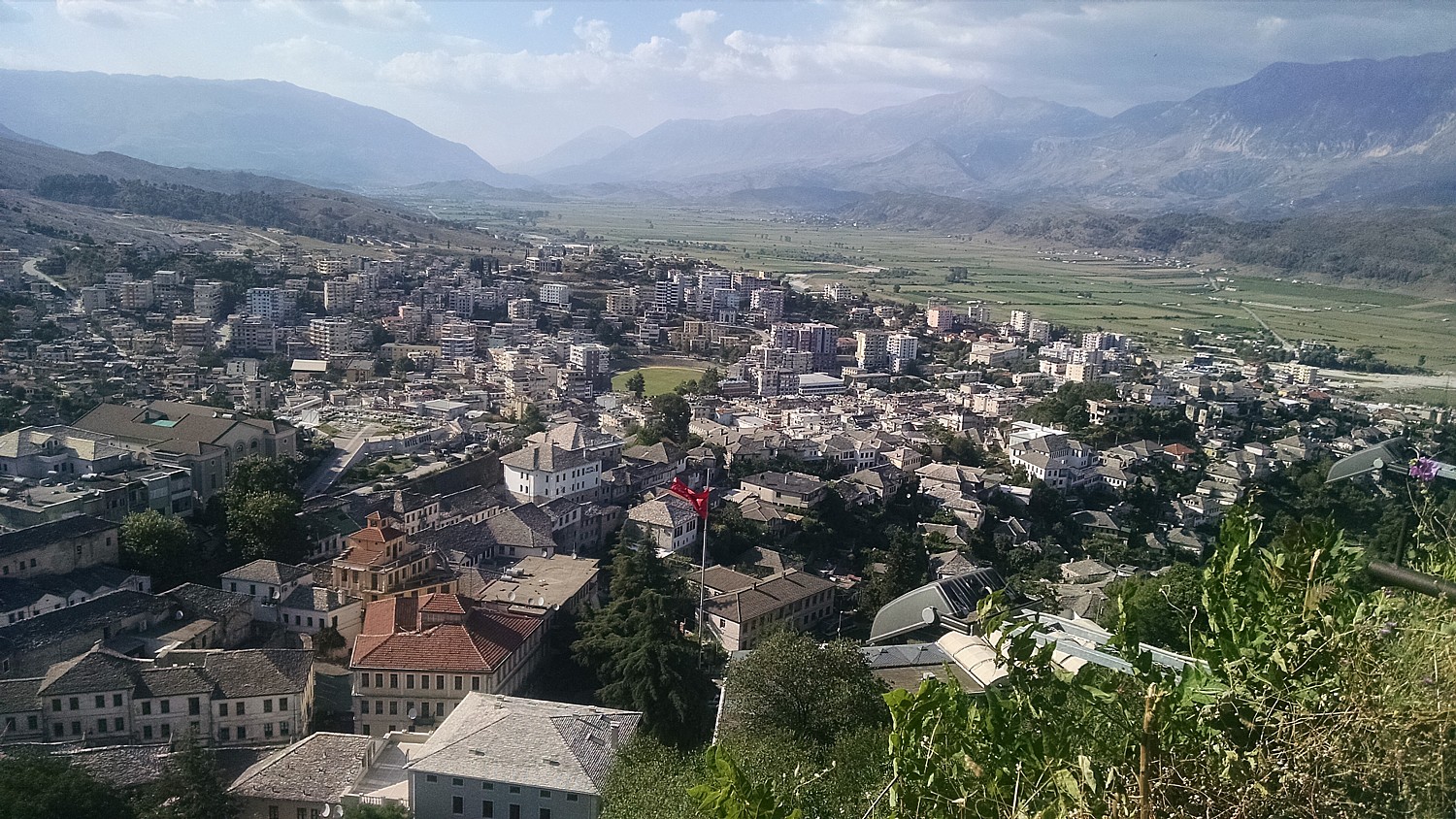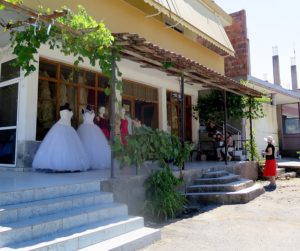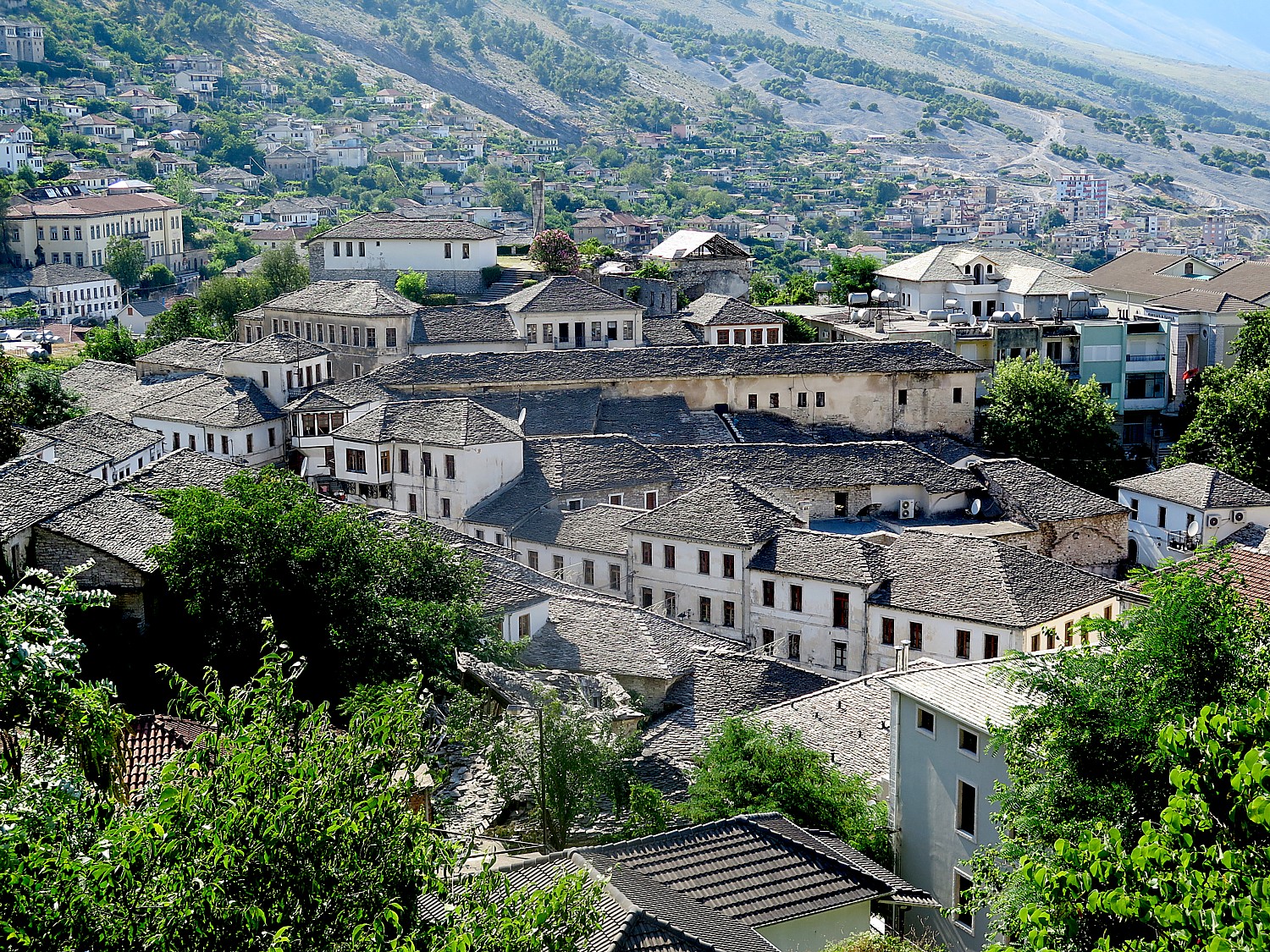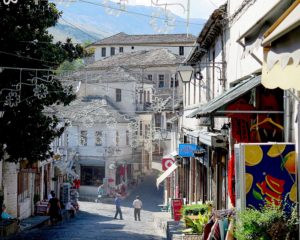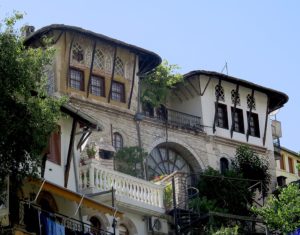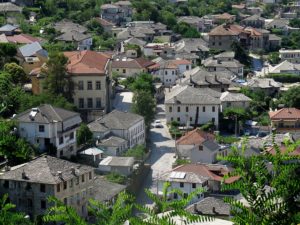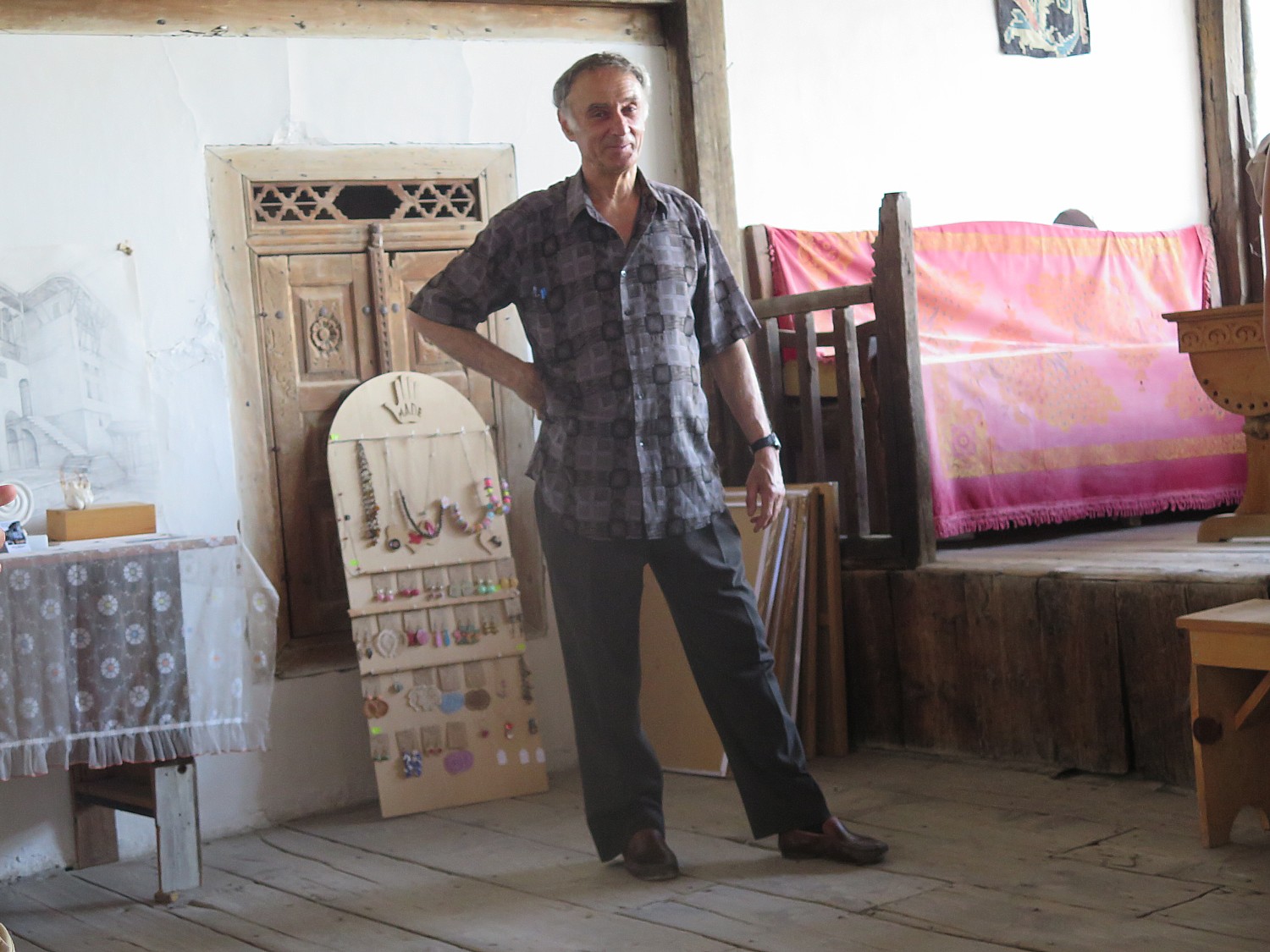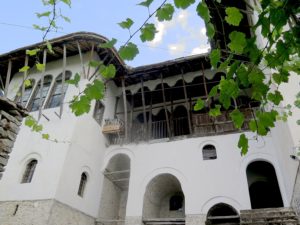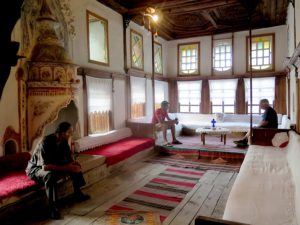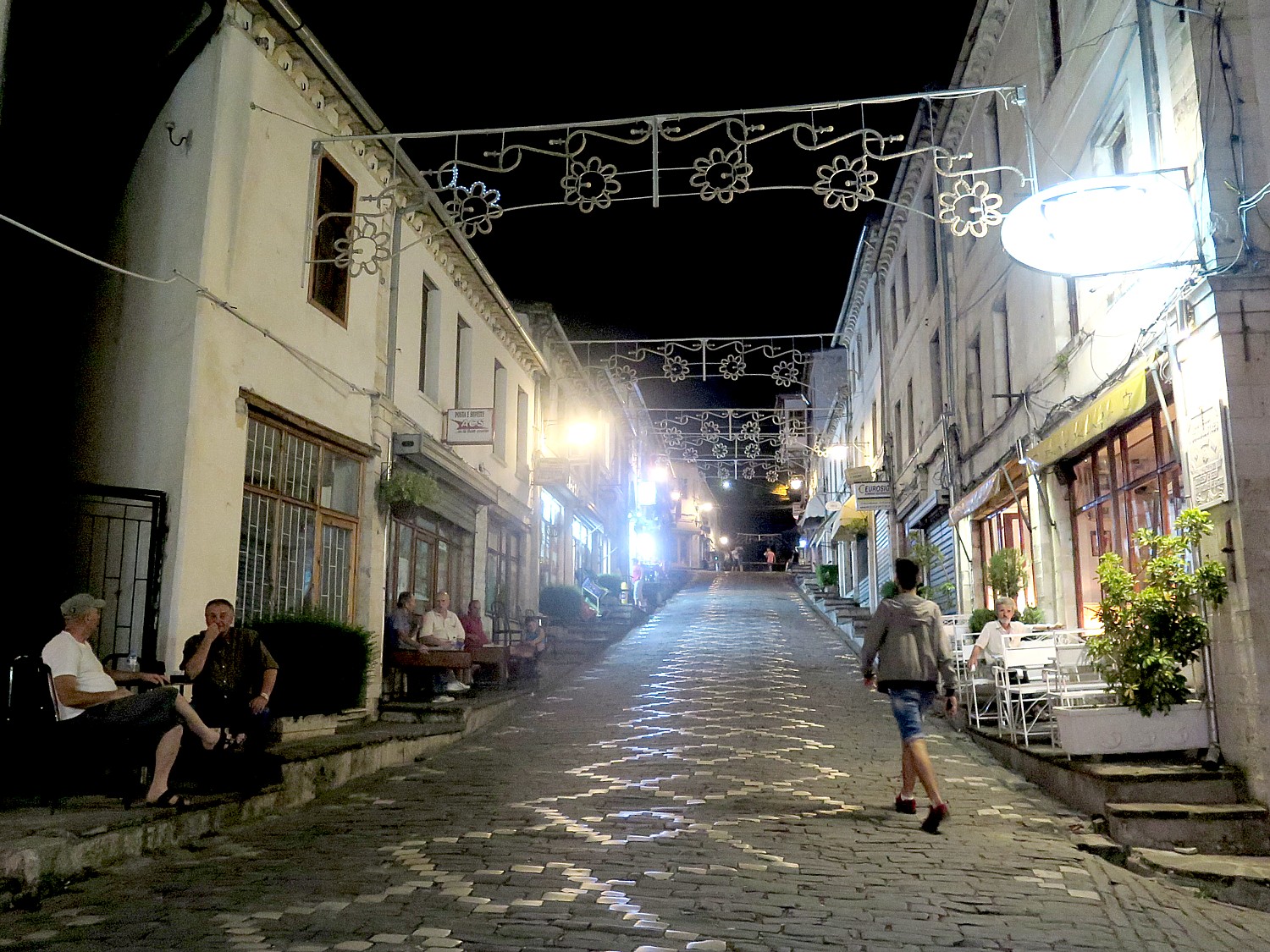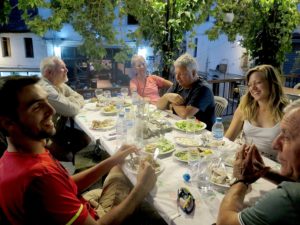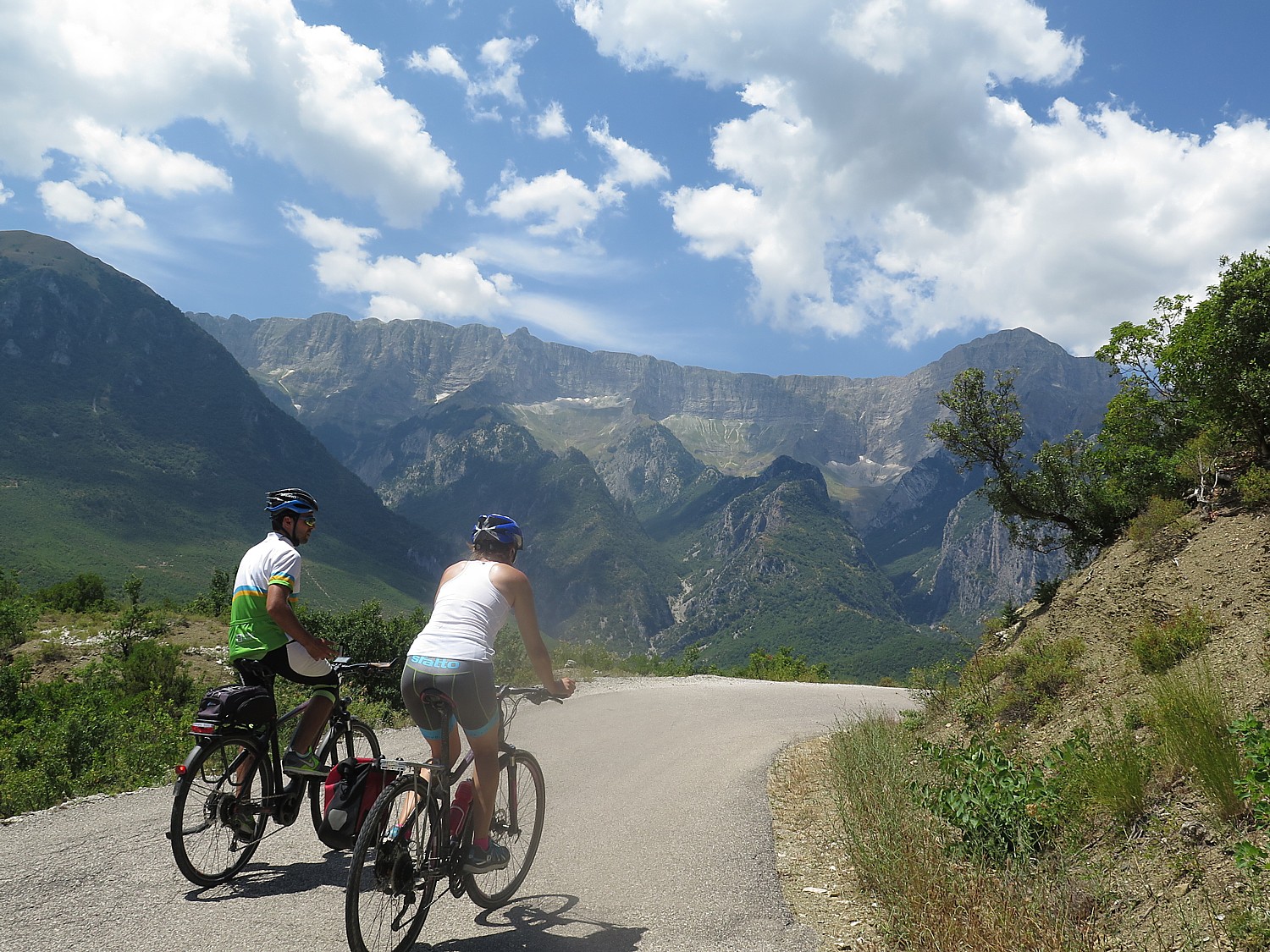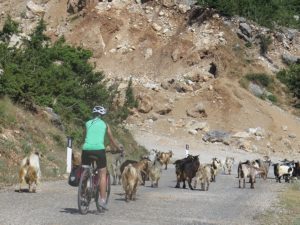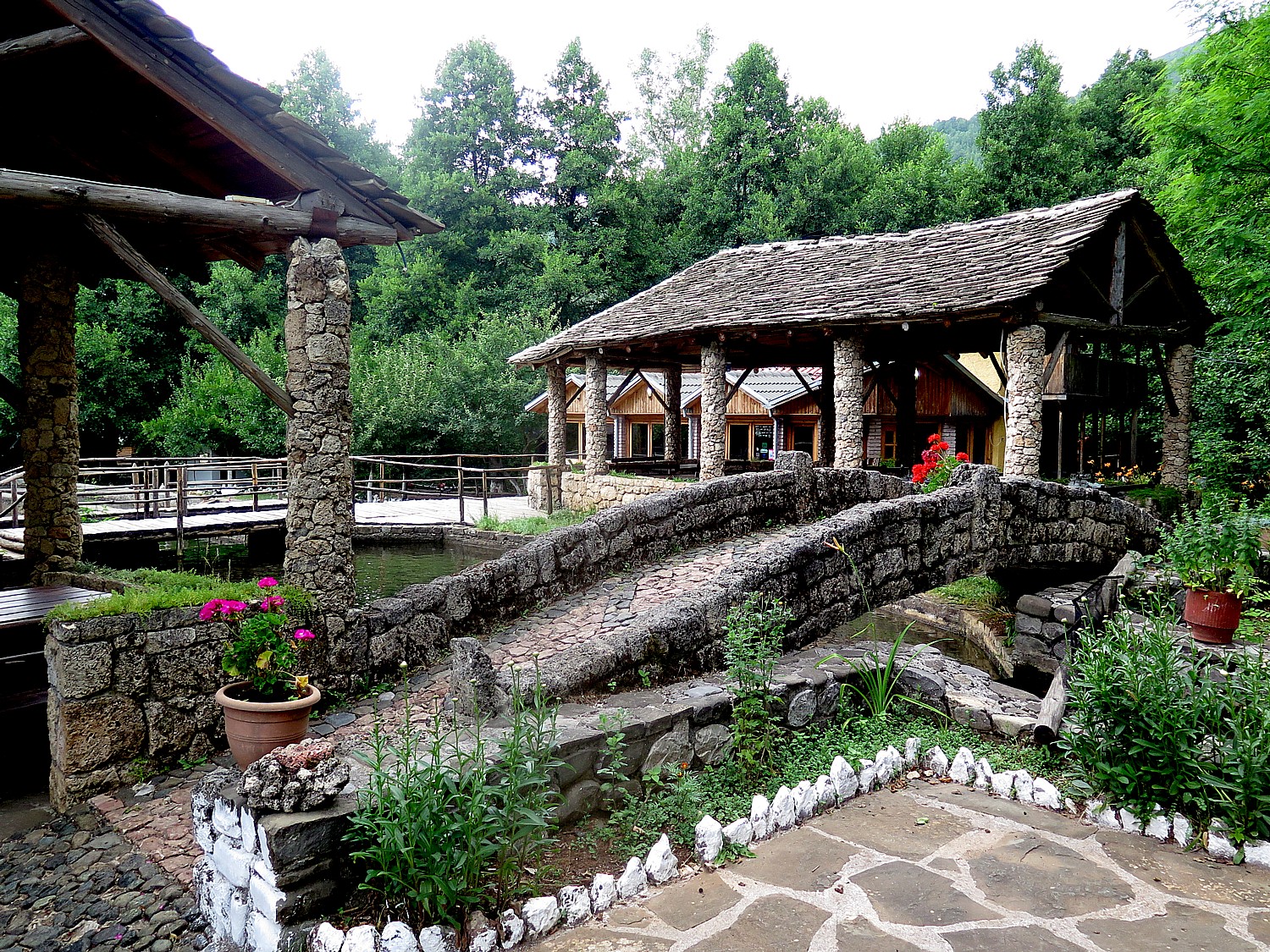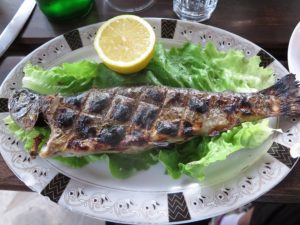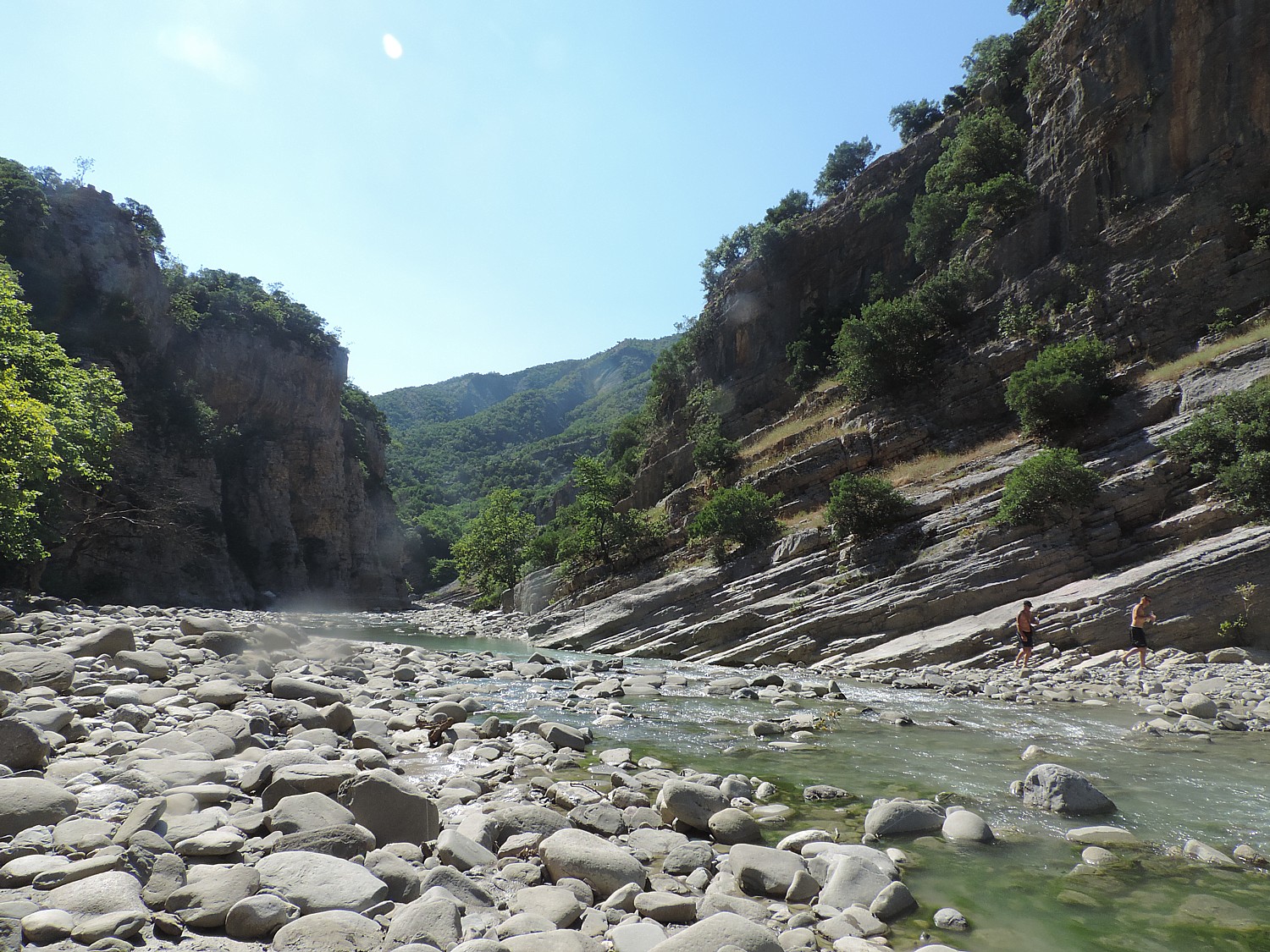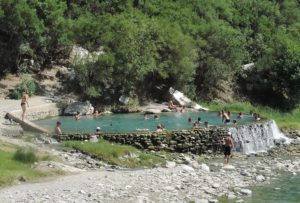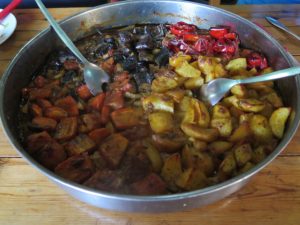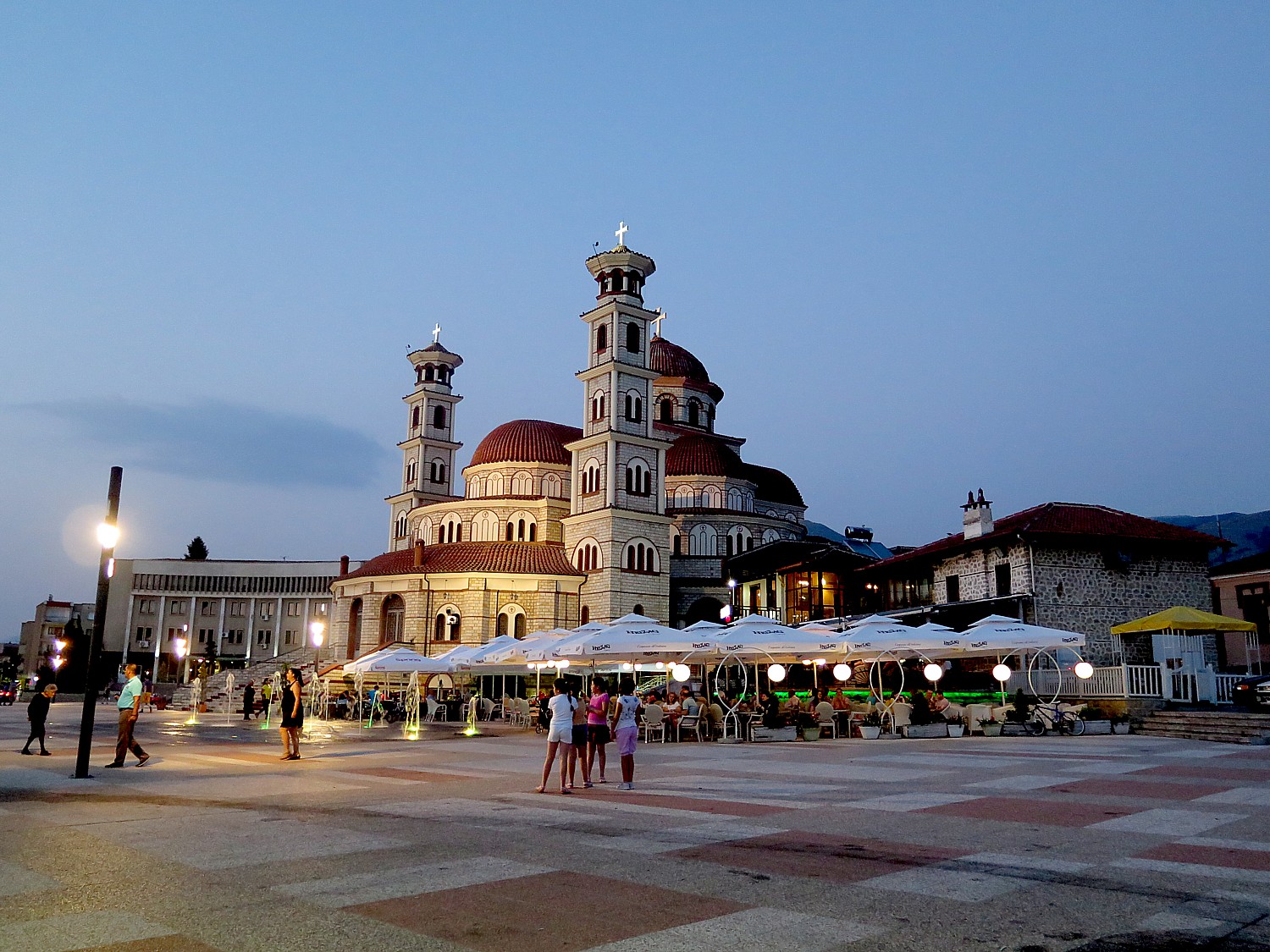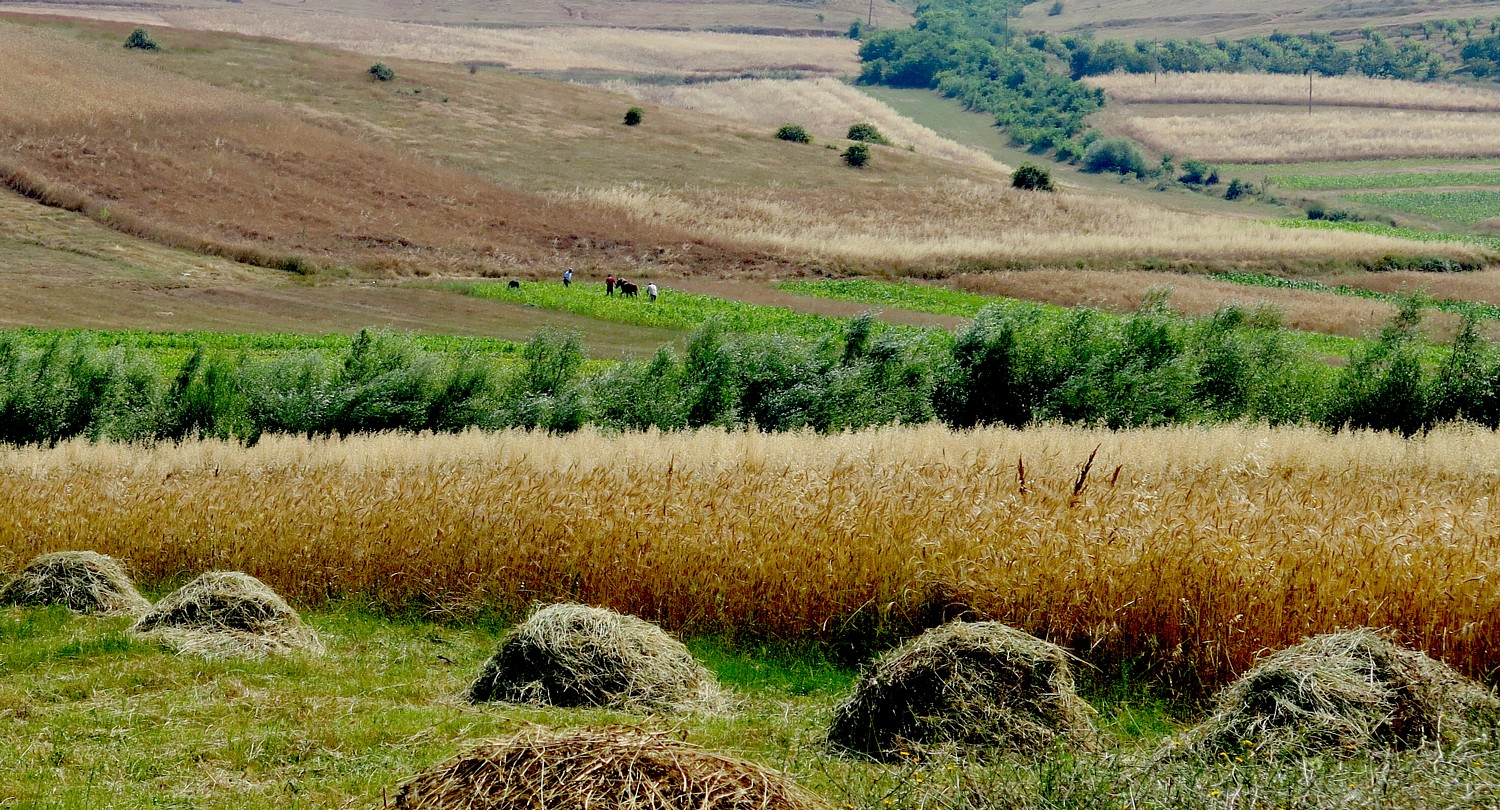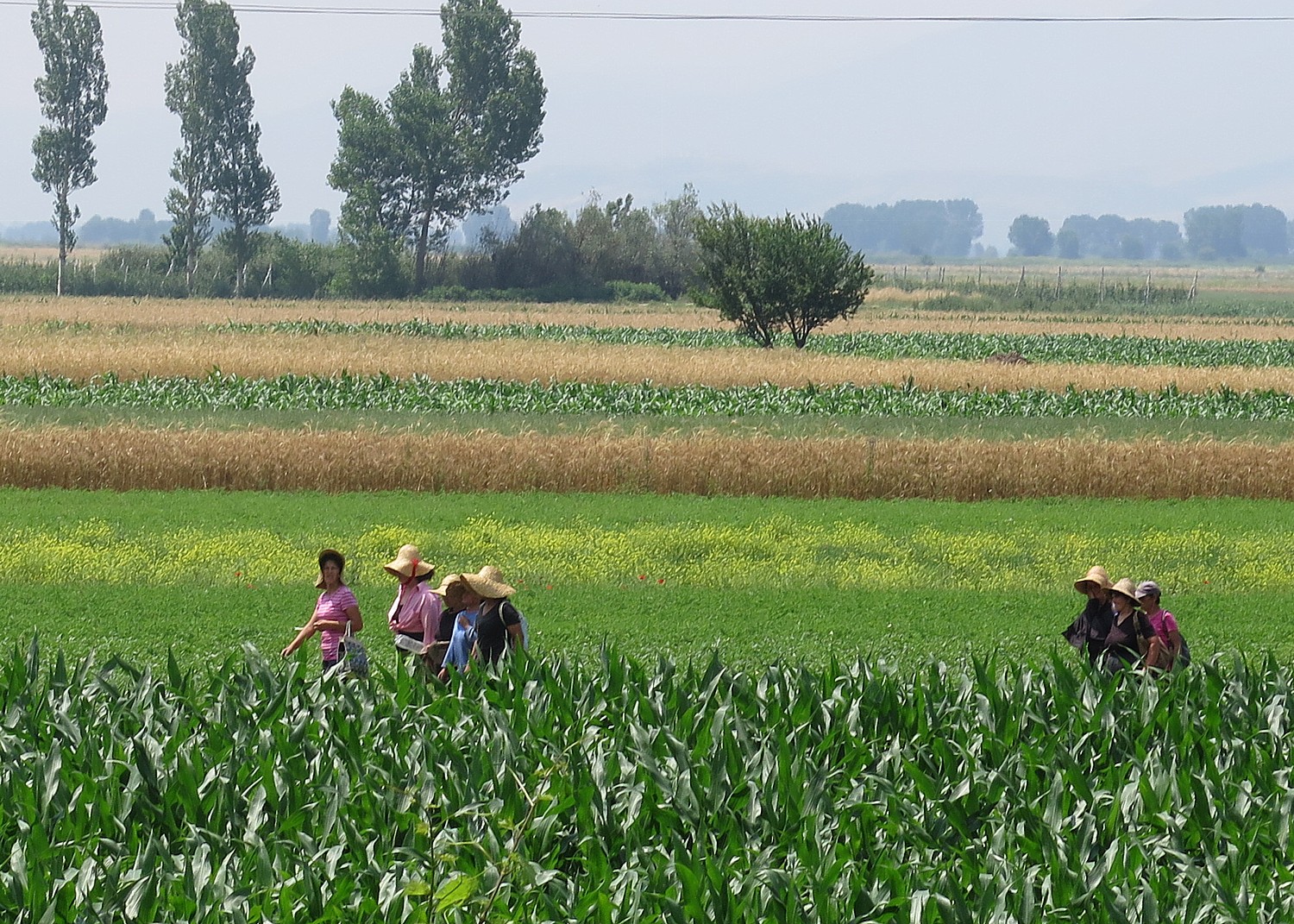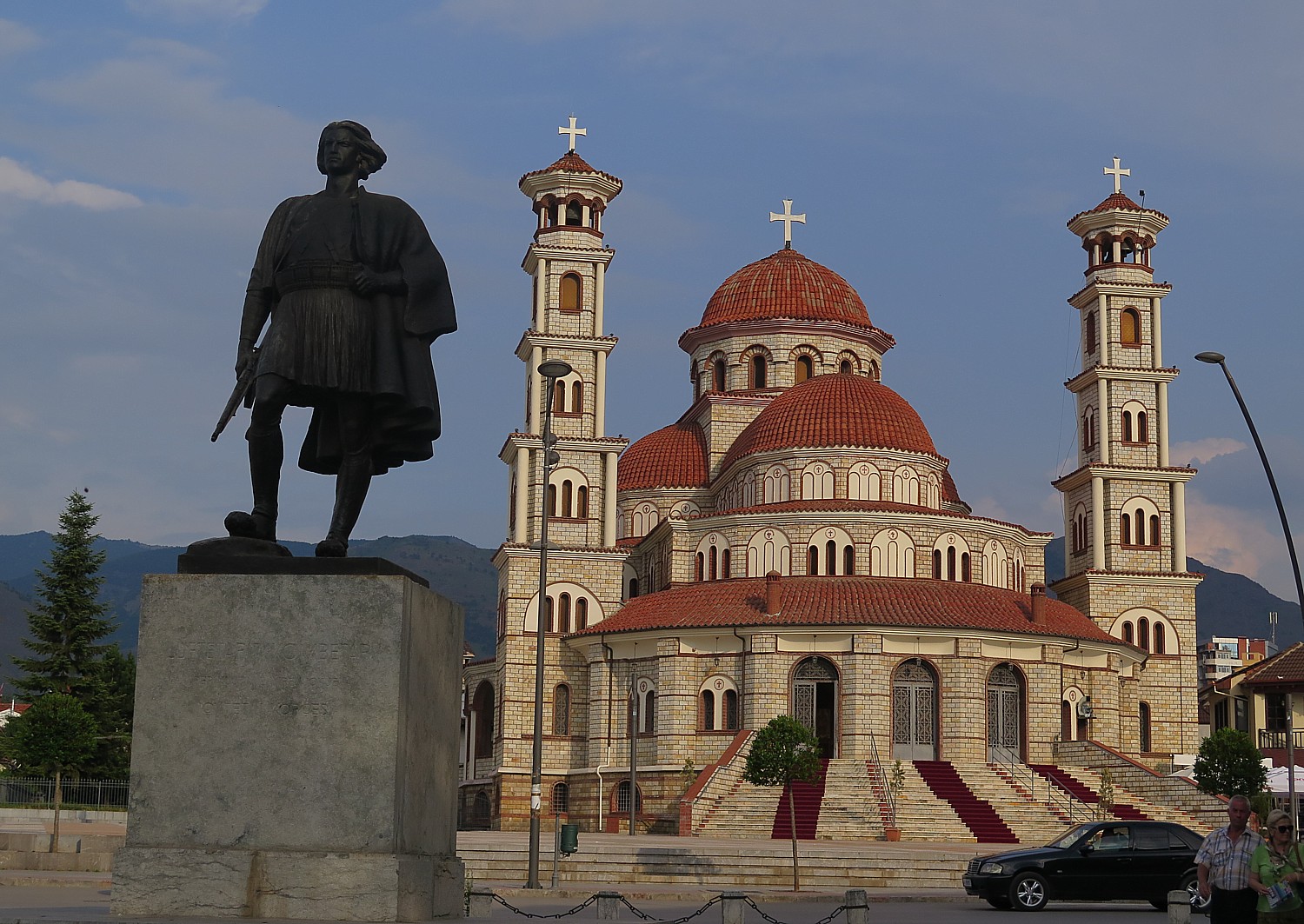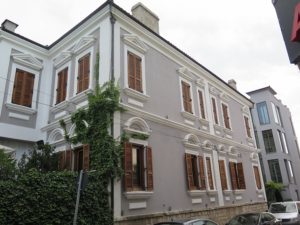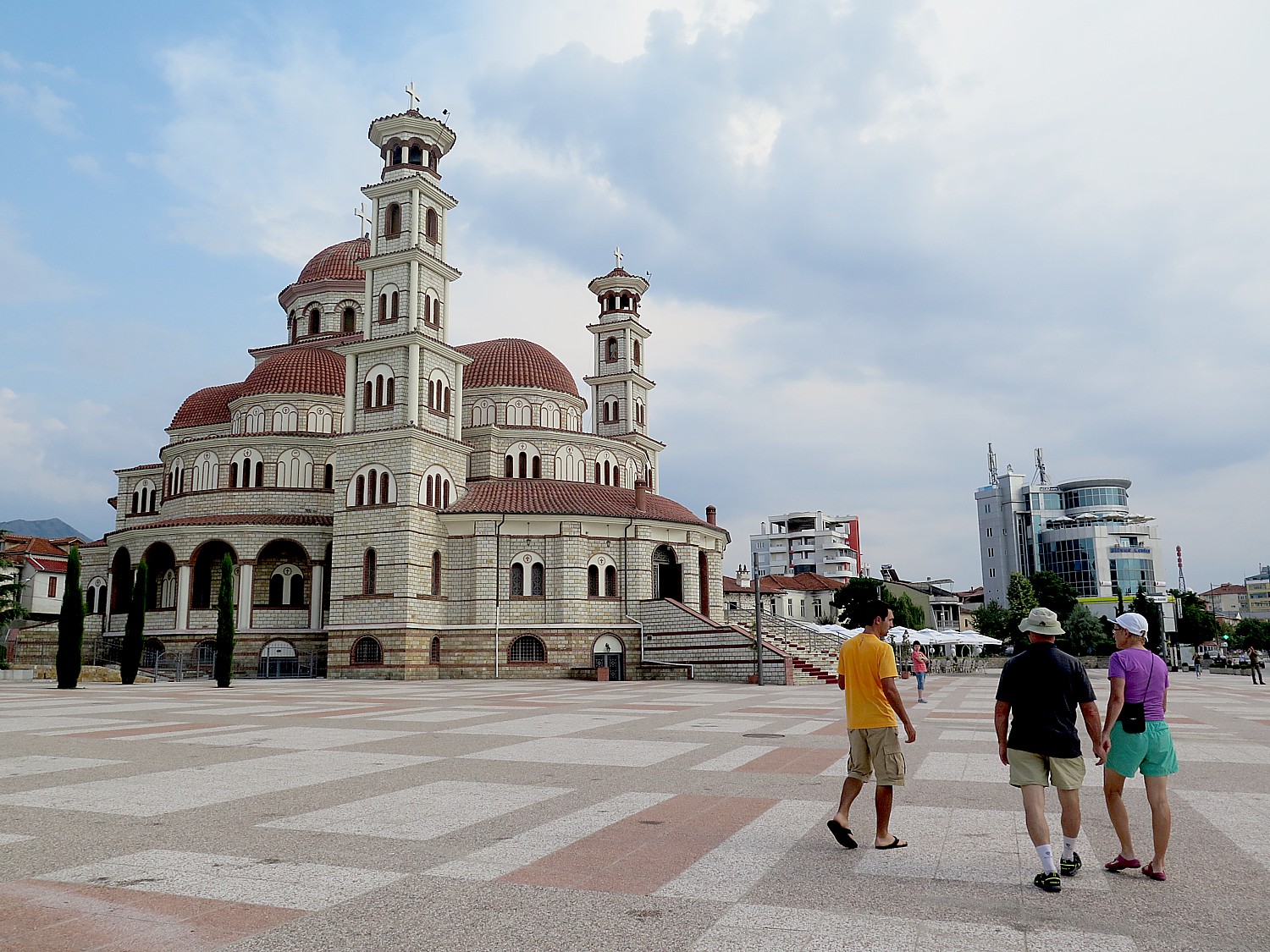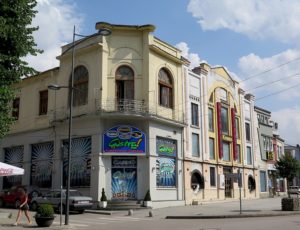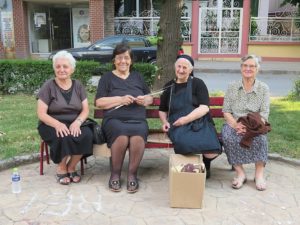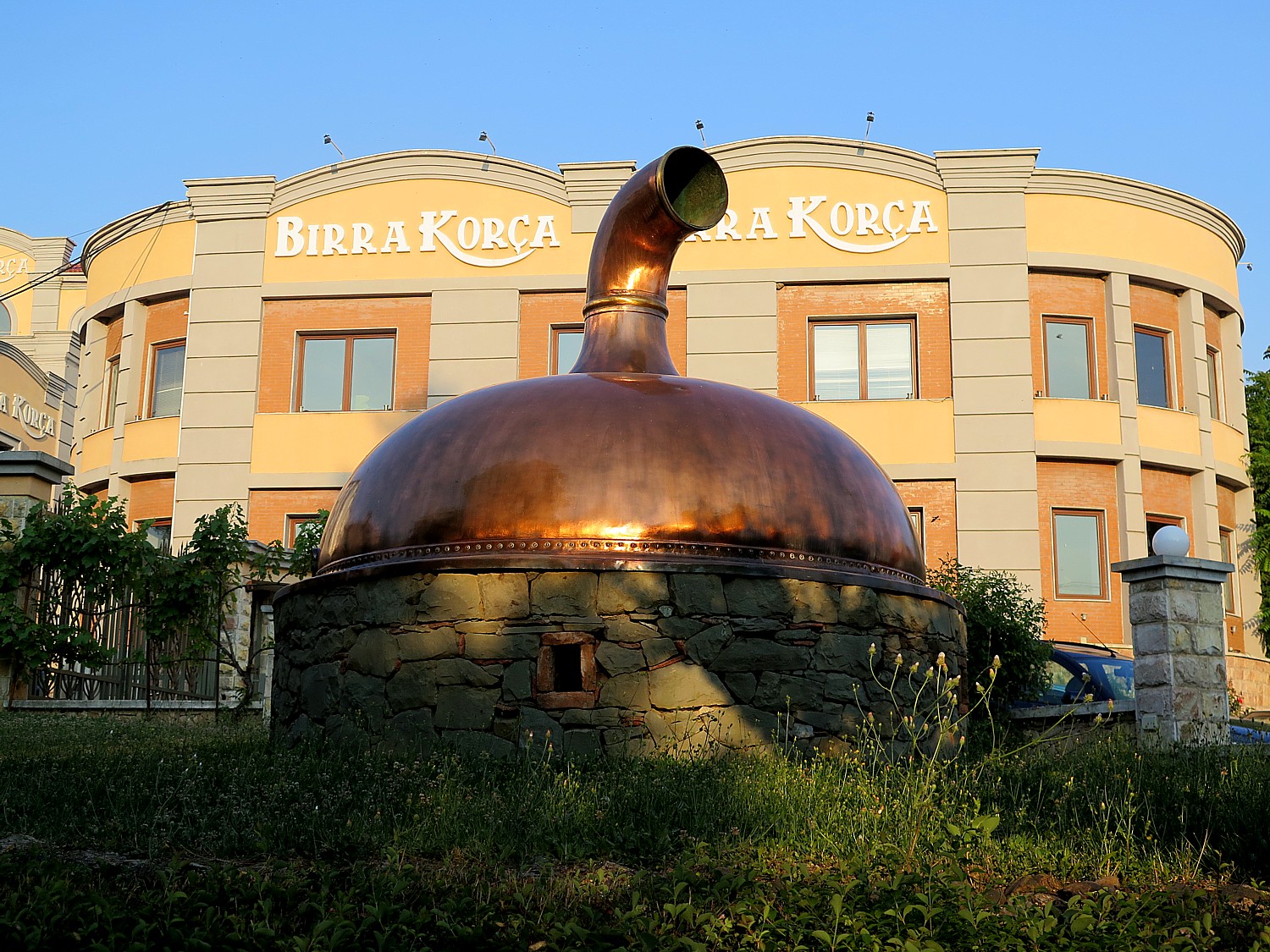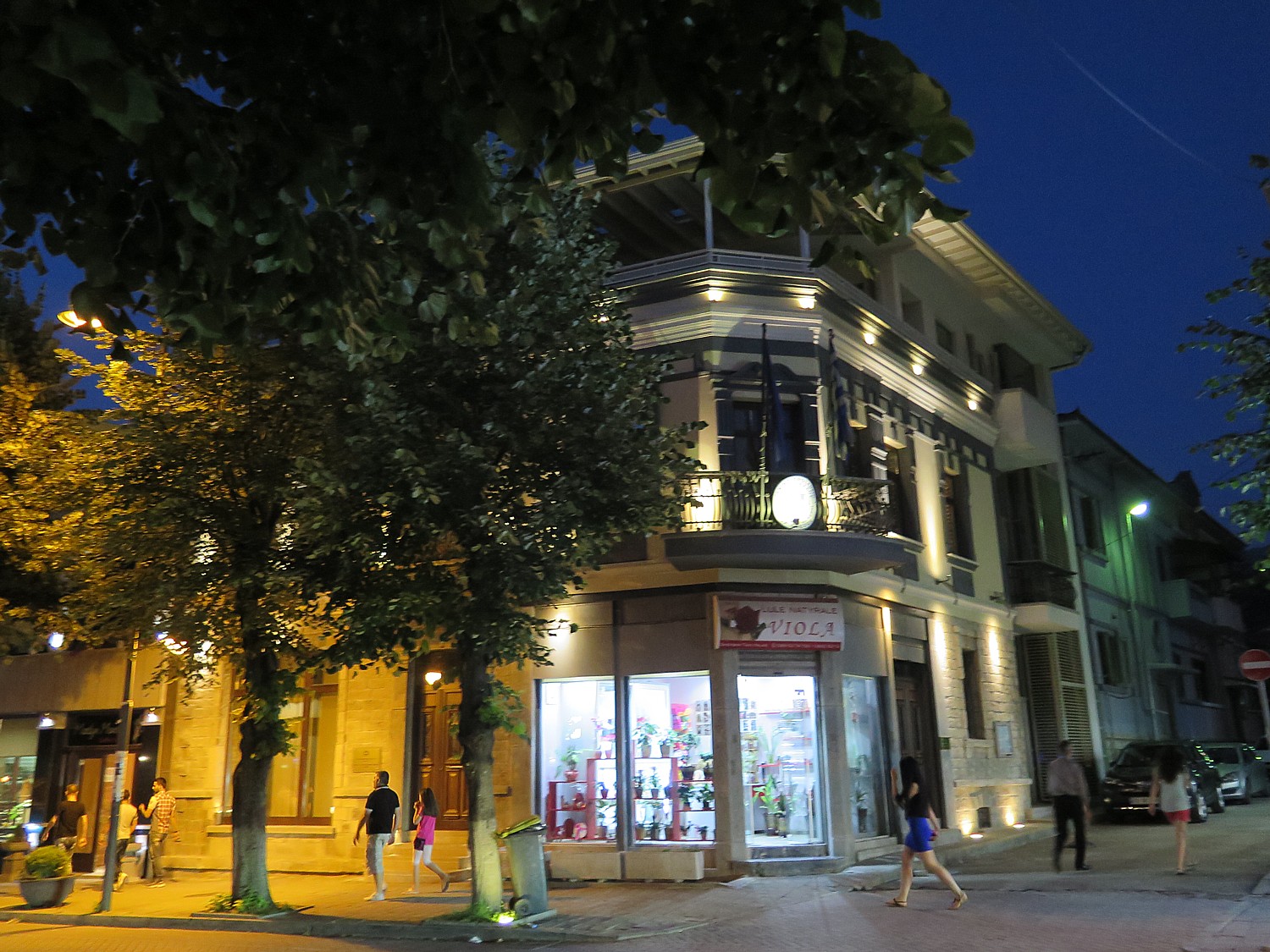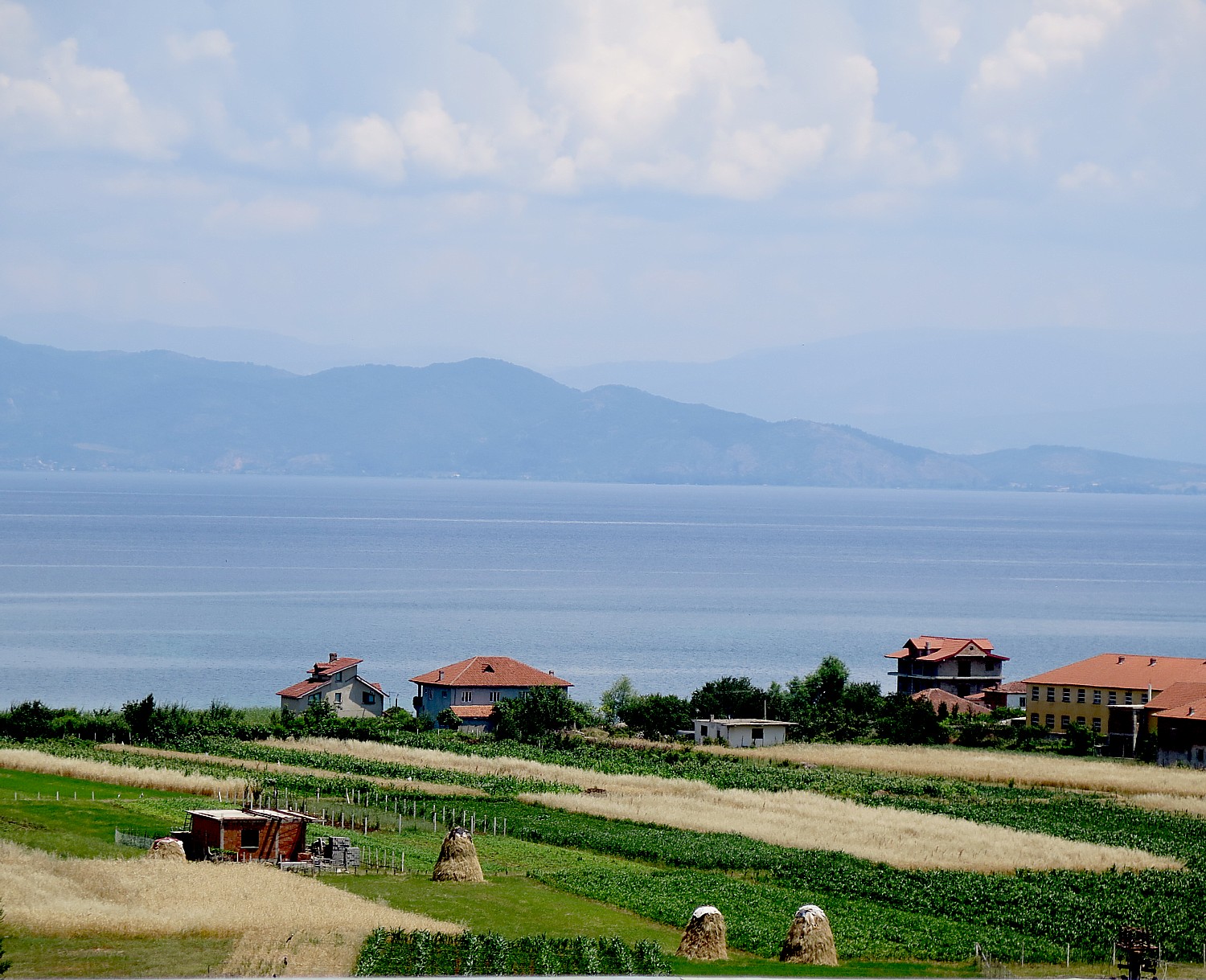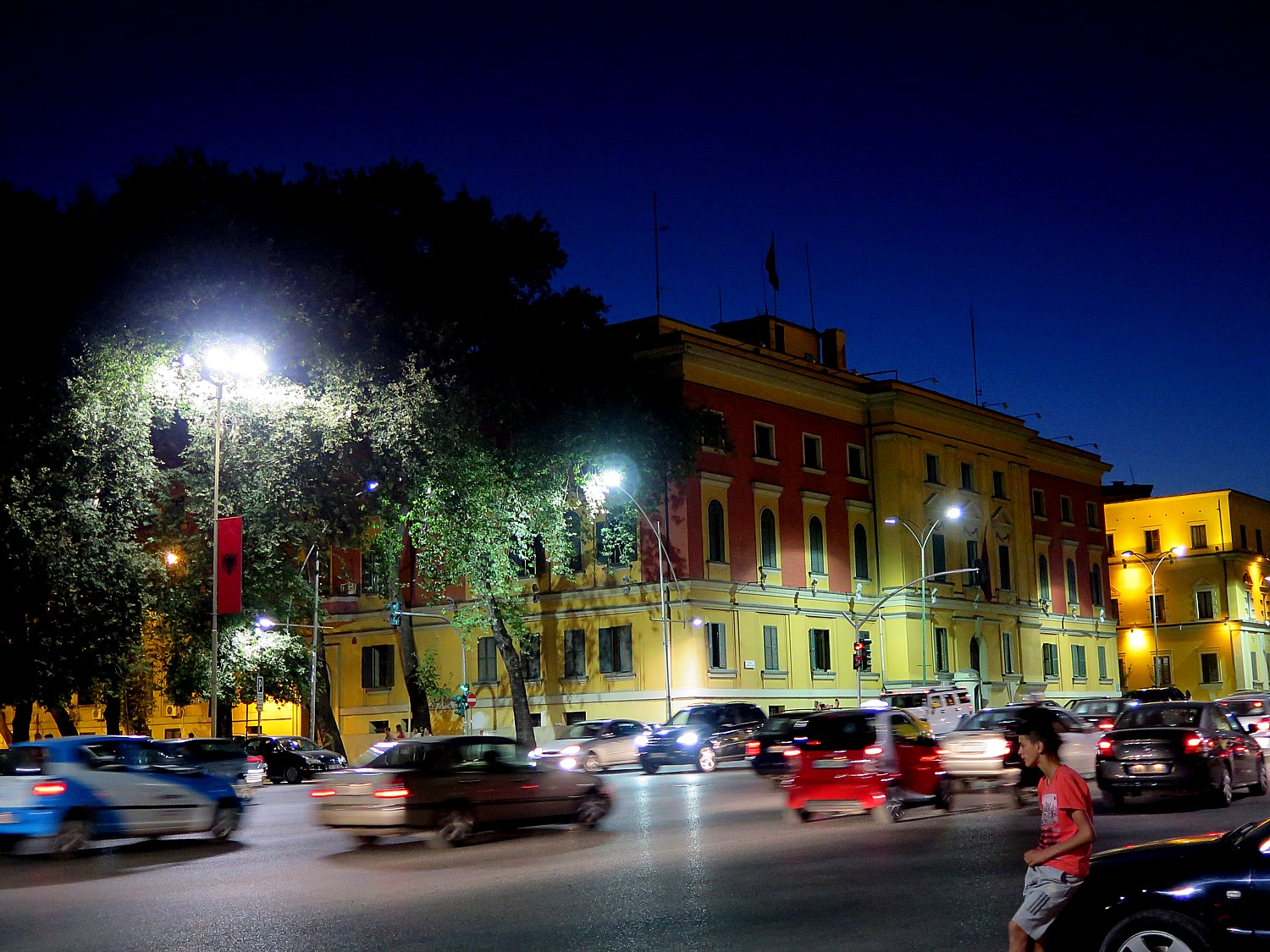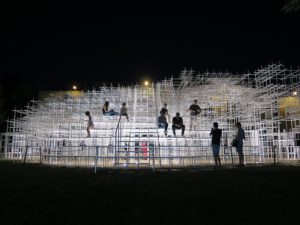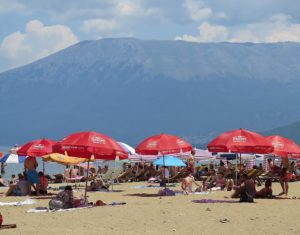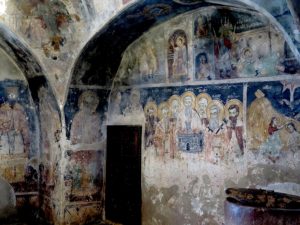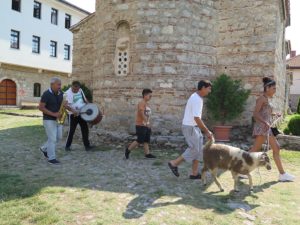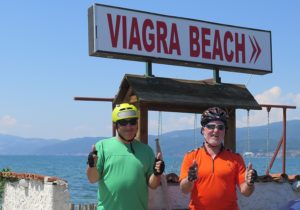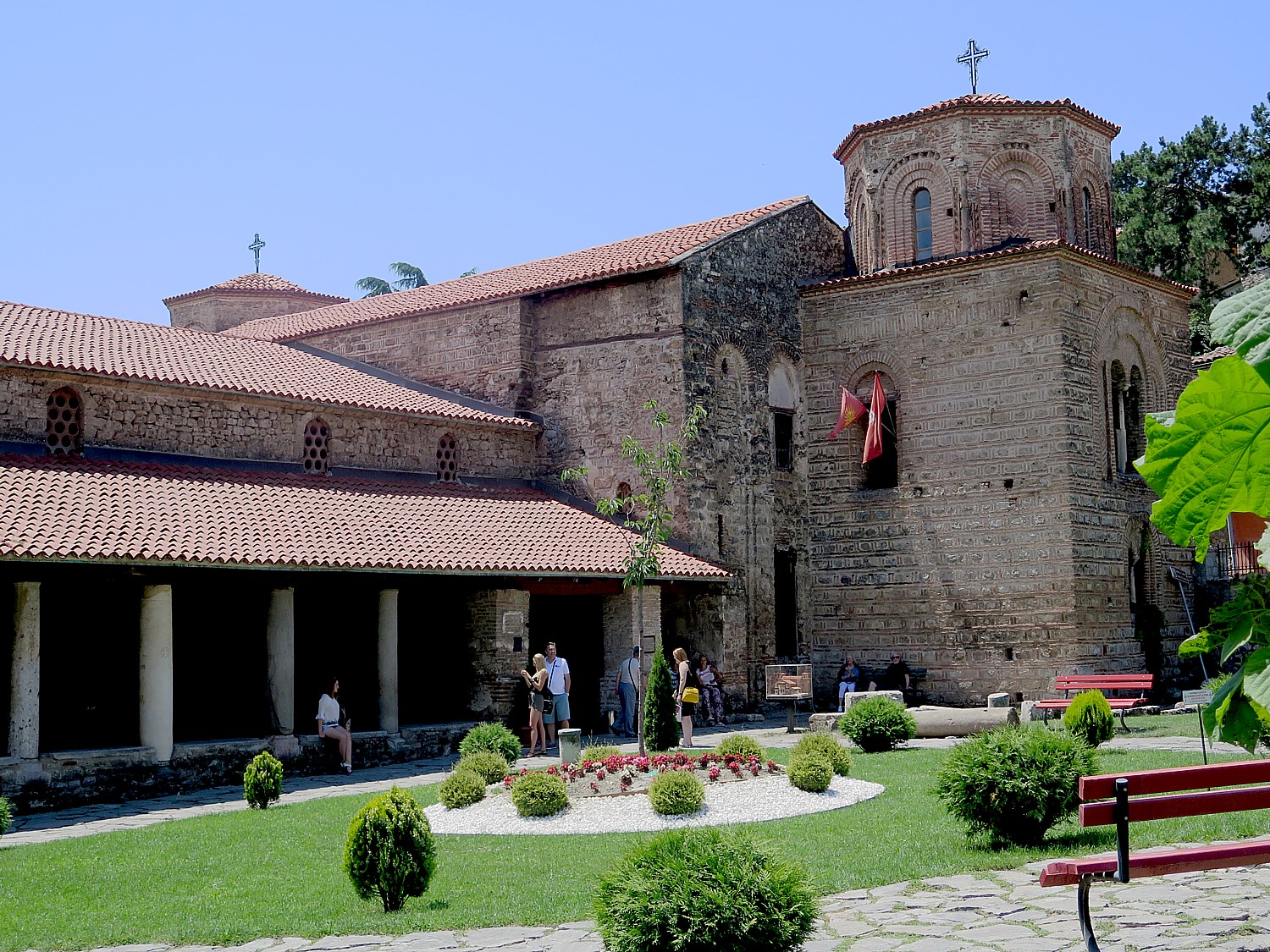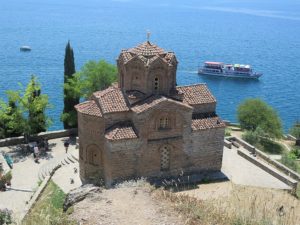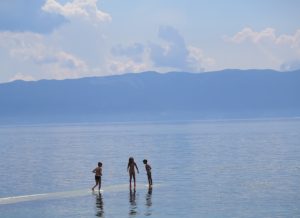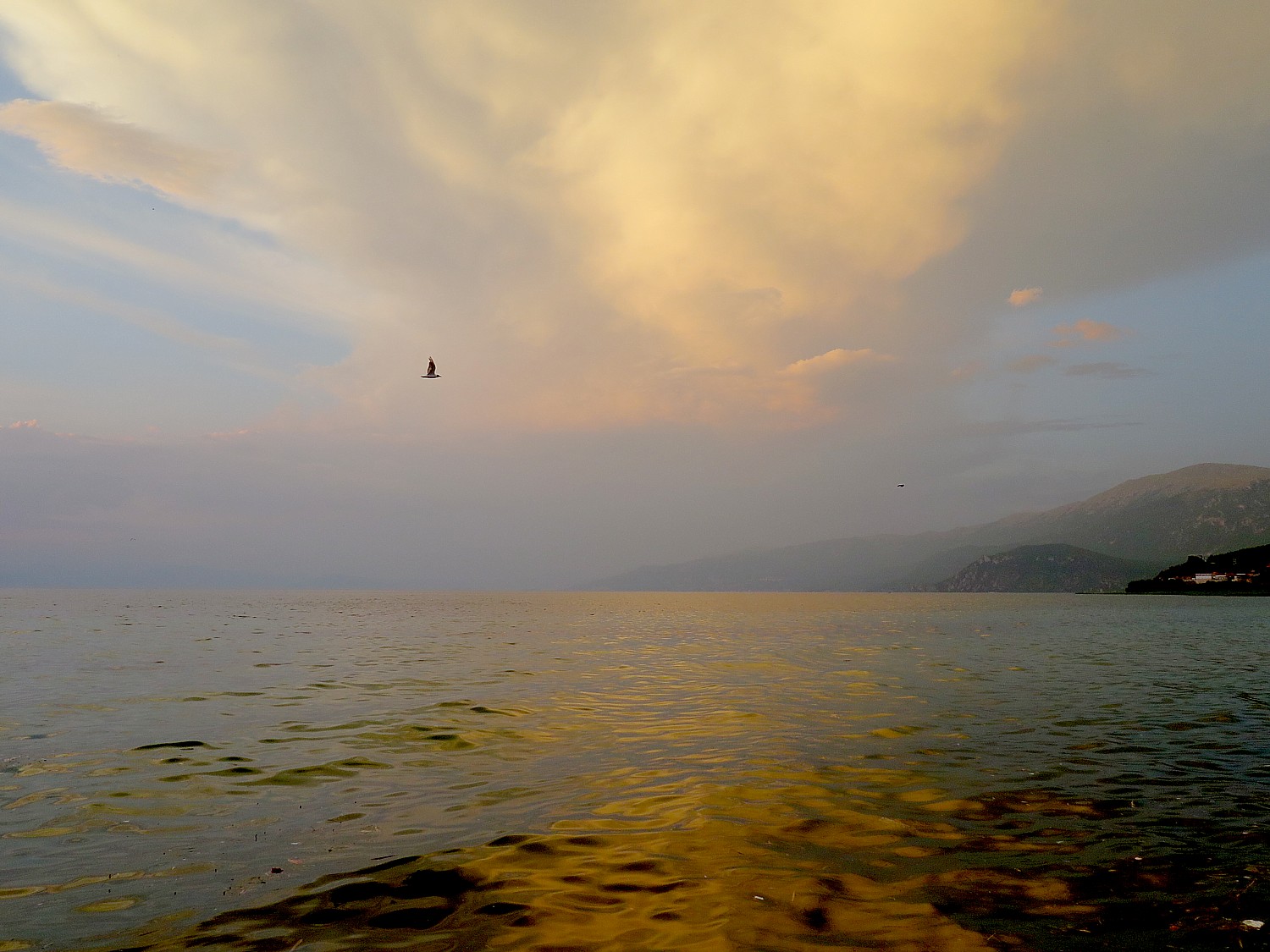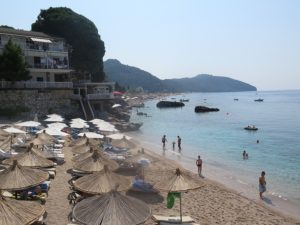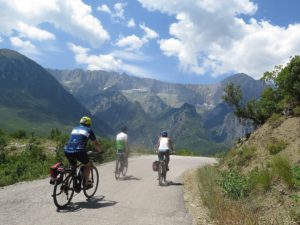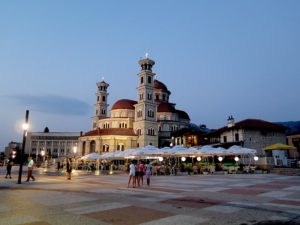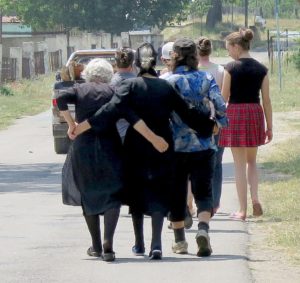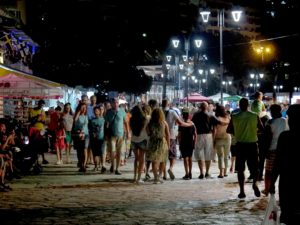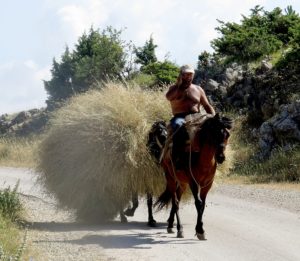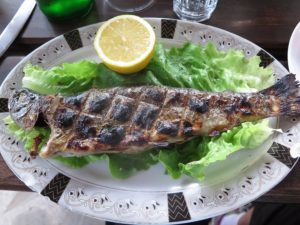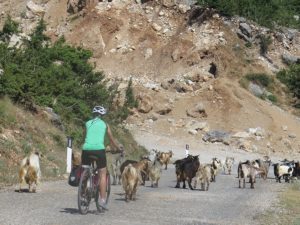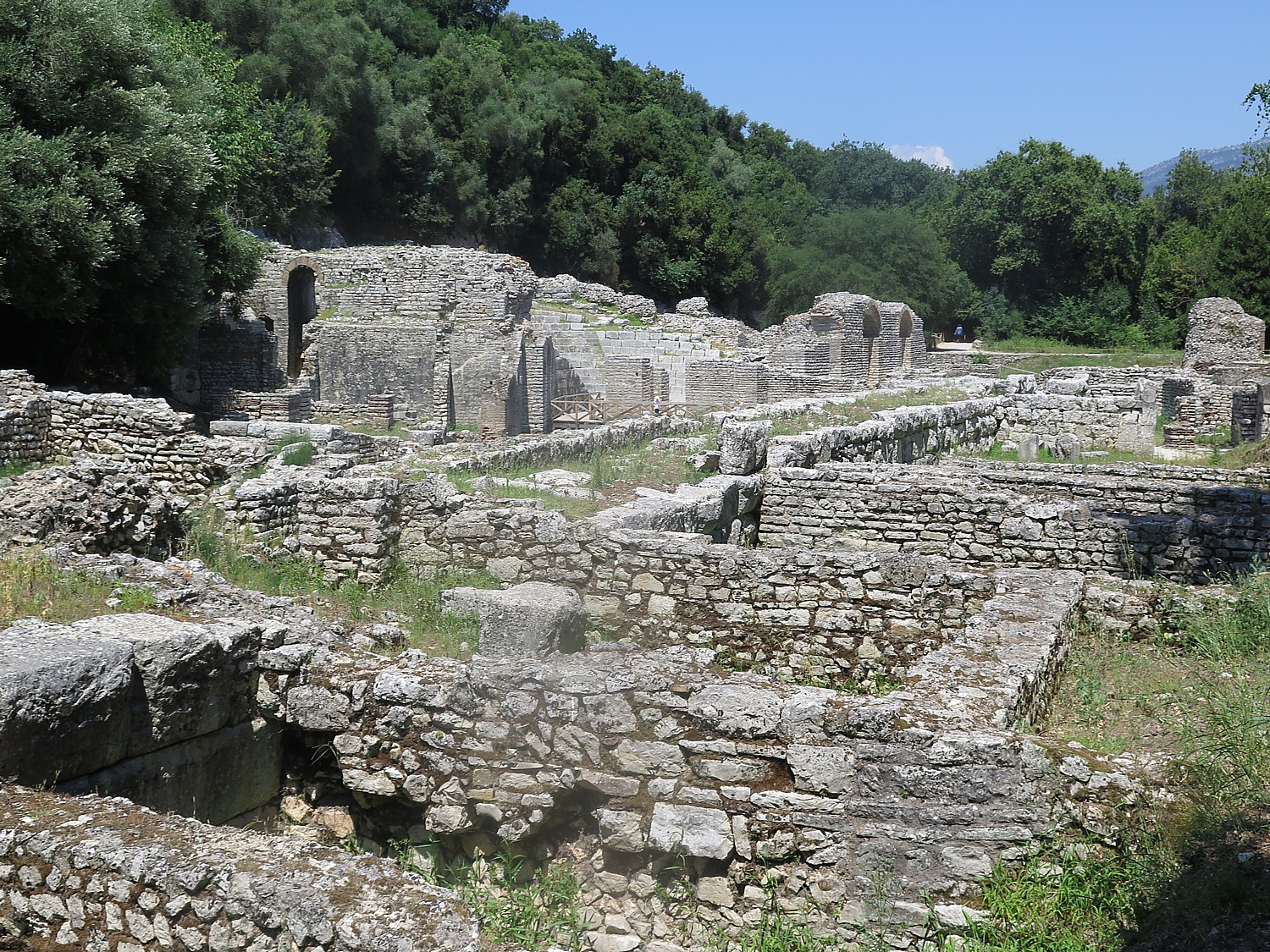
By Karen Rubin, goingplacesfarandnear.com
(I travel to Albania with BikeTours.com’s President Jim Johnson on a specially constructed “President’s Tour” itinerary that modifies the regular “Albania’s UNESCO Sites with Rivers, Valleys, and Gorges” trip. (See: Come to Albania Now to See Emergence of a Young Country-Best Way to Experience Albania is on Bike Tour. This is 6th in the series.)
On this, the seventh day of our cycling through Albania (8th day of our trip), we have our longest distance ride, at 70 km, but it is mostly downhill: just 725 meter gain in elevation and a total of 1285 meters drop, and mostly along the coast, giving us our first spectacular views of the Ionian Sea, with the Greek island of Corfu in the distance.
But today’s attraction is an absolute highlight among the many fascinating places we have already visited in Albania: the National Park of Butrint is a 2000-year old Hellenic-Roman-Byzantine city, reclaimed from forest overgrowth and an earthen tomb by Italian archaeologists beginning in 1924, nearly 100 years ago. Indeed, Butrint is the most visited cultural tourist destination in Albania, and for good reason.
The setting is exquisite, the ruins most impressive, and for me, the connection to Asclepius (the Greek God of Healing or more accurately the father of Medicine), and to Anthony and Cleopatra (defeated in the battle Actium nearby by Augustus who is immortalized with busts created during his lifetime which can be seen in the museum), makes this place all the more profound.
But to get there, we have a fantastic ride.
After the past few days riding in the mountains (affording magnificent views), we reach the seacoast. Albania’s coastline extends over two seas: from the Adriatic Sea in the north to the Ionian Sea in the south, where we are.
We start with a 45 minute transfer in the van to Muzina Pass in the mountains that brings us to the seacoast. We start descending just before the turnoff to Saranda which is our ultimate destination today (we will double back to Saranda, a beach resort city, by the end of the day) and continue south toward the southernmost tip of Albania, near the Greek border.

We pass a fascinating triangle-shaped fort on our way to a small “improvised” ferry – a wooden raft pulled by cables that calls to mind Huckleberry Finn – to Butrint, a UNESCO World Heritage Site, one of Albania’s most important archeological treasures.
Before visiting the site, though, we enjoy a terrific lunch just next door at the Livia Restaurant (named for Emperor Augustus’ wife, as I learn later in the museum at Butrint) – mussels, calamari, sea bass, dining outside under a canopy, across the road from the water.
After lunch, we stroll into the National Park.
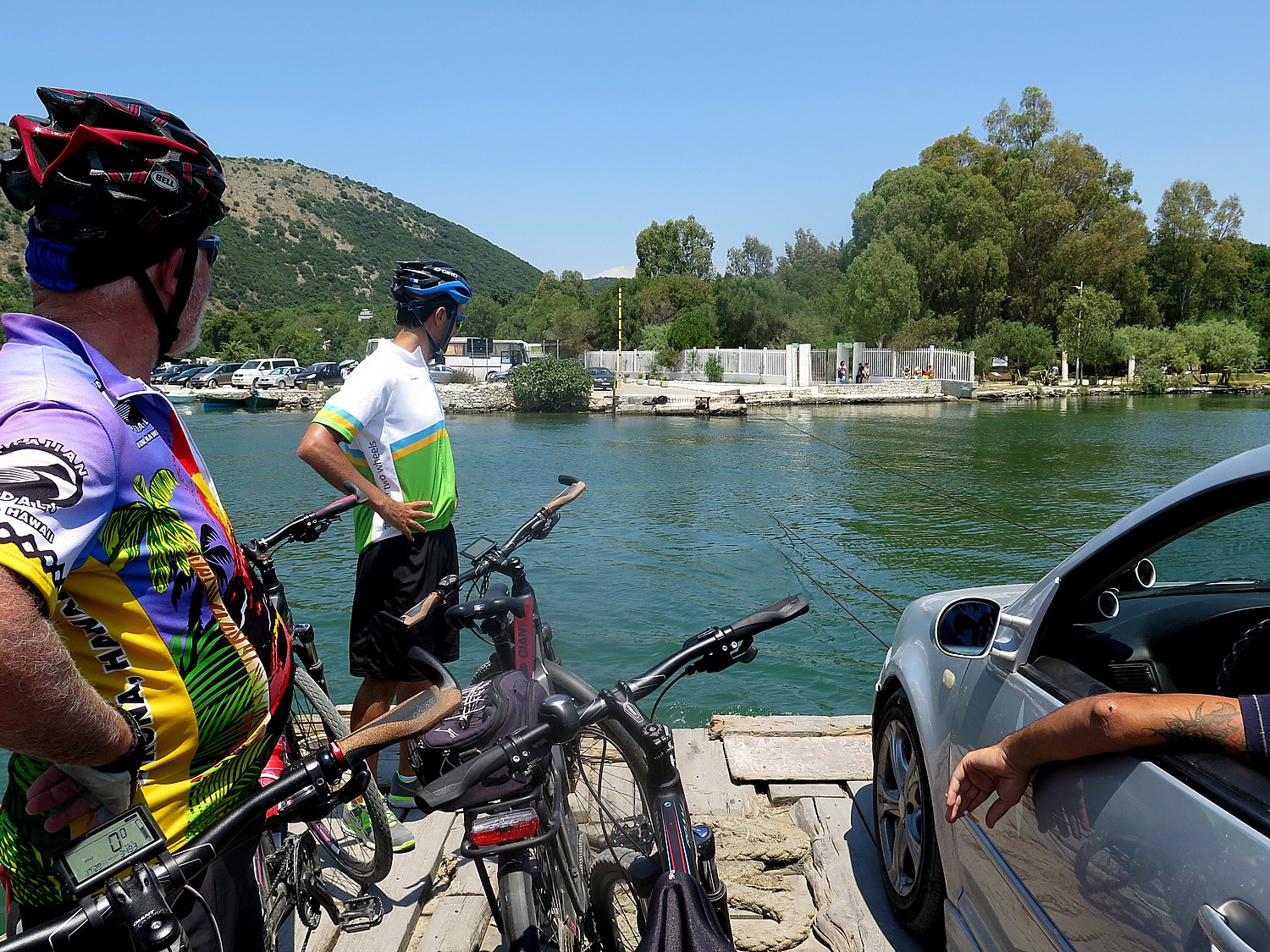
Butrint’s history dates back to Greek times (in fact, this whole area was part of Greece), and was an important coastal city.
Roman writer Virgil said the legendary founder of the city was the seer Helenus, a son of the King Priam of Troy who moved West after the fall of Troy. Greek Historian Dionysius of Halicarnasseus, as well as Virgil, in his epic poem “Aeneid”, wrote that Aeneas visited Bouthroton after he escaped the destruction of Troy.
What is so fascinating is that there were five civilizations that occupied this town, and you can peel away the centuries and eras, one by one. The city was hidden underground until 1924 when Italian archaeologists began to excavate. Most of what we see is thanks to the Italian Archaeological Mission, headed by Luigi Maria Ugolini, who worked for a decade in Butrint (1928-1939). What has been uncovered shows the stamp of Hellenistic, Roman, Byzantine, Venetian and Ottoman cultures and civilization, and the artifacts are presented in an astonishing museum.
According to notes, Butrint (also called Buthrotum or Bouthroton) was originally within the region of Epirus, and one of the main centers of the Greek tribe of Chaonians who had close contacts to the Corinthian colony of Corcyra (Corfu).
The earliest archaeological evidence of settled occupation dates between 10th and 8th centuries BC. The occupied original settlement likely sold food to Corfu and had a fort and sanctuary. It occupied a strategic position due to its access to the Straits of Corfu. The geographer Hecataeus of Miletus described Buthrotum as an important port and trading center on the main Adriatic waterway.
Around 380 BC the ancient settlement was surrounded with defensive walls, fortified with a new 870 meters long wall, with five gates, enclosing an area of four hectares.
By the 4th century BC it had grown in importance as a cult center, and included a sanctuary to Asclepius, the Greek god of healing, on the southern slope of the Acropolis hill, an agora and a theater – there is even an inscription from the 4th century BC on one of the seas of the theater that credits donations of religionists that supported construction.
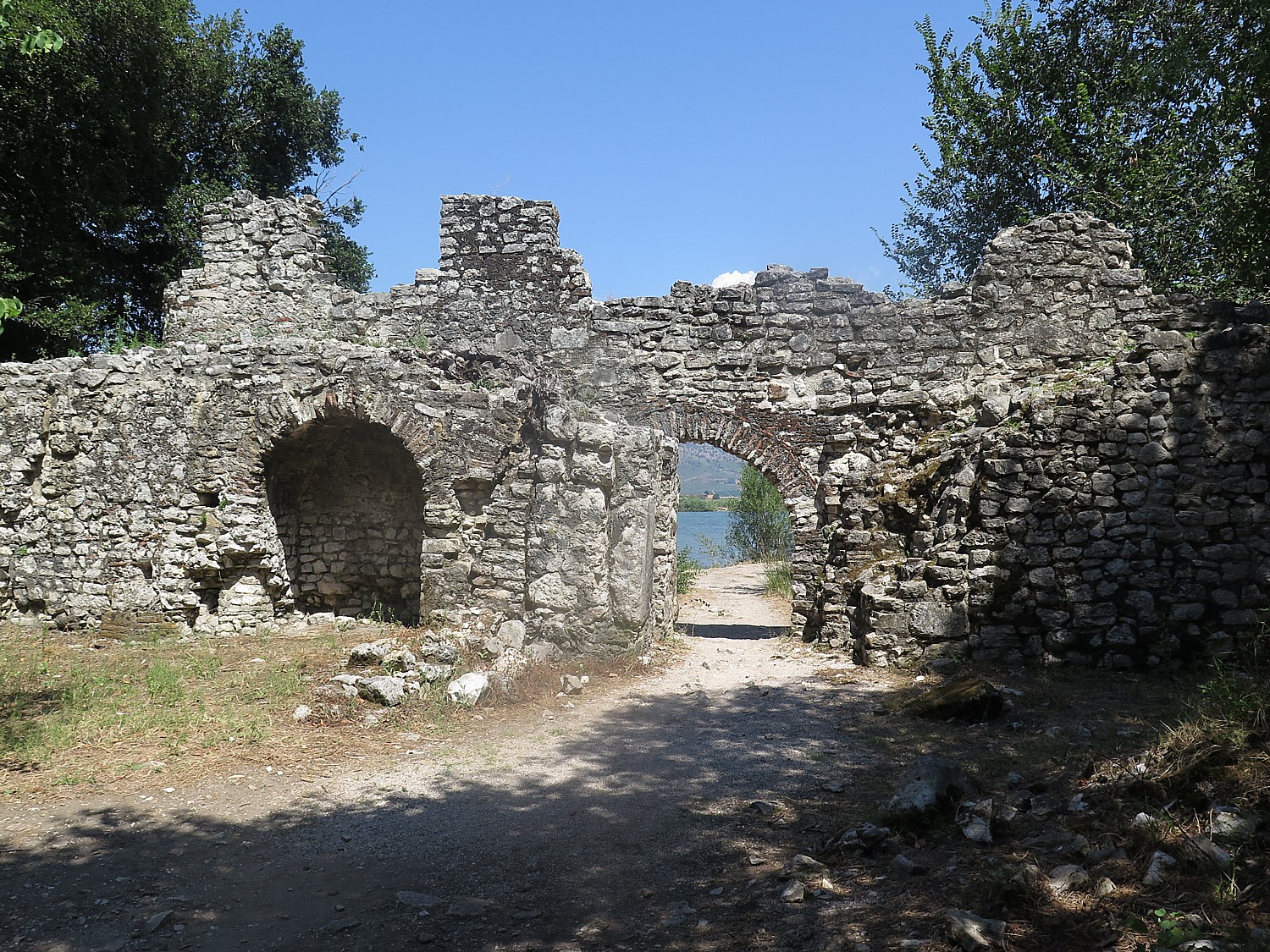
In 228 BC, Buthrotum (Bouthroton) became a Roman protectorate and later, in the 1st century BC, a part of the Roman province of Macedonia. In 44 BC, Caesar designated Buthrotum as a colony to reward soldiers who had fought with him against Pompey, naming in Colonia Julia Buthrotum. In what sounds like it could be ripped from the headlines of today, the local landholder Titus Pomponius Atticus objected to his correspondent Cicero who lobbied against the plan in the Roman Senate. As a result, Buthrotum received only a small number of colonists.
In 31 B C, Emperor Augustus, fresh from his victory over Mark Antony and Cleopatra at the battle of Actium mere meters away from here, renewed the plan to turn Buthrotum into a veterans’ colony.
Under Emperor Augustus, the city, now known as Colonia Augusta Buthrotum, experienced its greatest development, doubling the size of the town – temples, fountains, baths (thermae), villas (private residences), a forum complex, and nyphaeum ( a monument consecrated to the nymphs, especially those of springs, typically natural grottoes, which were believed to be where local nymphs lived), a new water supply and a bridge linking the two banks of the Vivari canal. (We see these ruins clearly, and even the nyphaeum the mere thought of which had piqued our curiosity.)
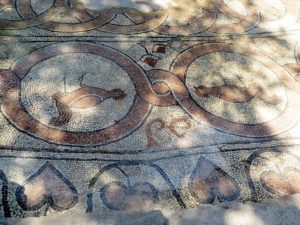
In the 3rd century AD, an earthquake destroyed a large part of the town. By the 6th century, it became the seat of a bishop and new construction included a large baptistery, one of the largest Paleochristian buildings of its type, and a basilica. We see some of the gorgeous mosaic floor of the baptistery, laid out in 8 rings with columns, which, we are told, is a rare treat and a bit of luck because the mosaic usually cannot be seen, kept under protective sand. But because they were in the process of changing out the sand, we get to see half of the floor exposed. So far, eight other churches have been uncovered, the most important of which is in Vrina plain on the other side of the Vivari canal.
Butrint followed the historical pattern seen in other Balkan cities, with the 6th to 7th centuries being a period of transformation of the Roman world into the Early Middle Ages.
By the beginning of the 9th century, Butrint had become a small fishing settlement. Around 1807, in the outfall of the Vivari canal, Ali Pasha built a fortress to guard against French attacks coming from Corfu. After his death, Butrint fell under Ottoman Rule, until the Declaration of Independence in 1912.
What is so impressive about Butrint is that it is at once a place of these extraordinary historical monuments that clearly depict these époques of civilization, but also the natural setting and landscape and the scale.
Pathway Through Time
Our visit begins at a Venetian tower built in the 15th and 16th century and a chapel of the 4th century BC dedicated to the god of Asclepius.
Junid, our Biketours.com guide on this two-week cycling trip through Albania, leads us on a path through the woods to the 300-seat theater where plays were performed and there was public discussion (they still hold festivals here).
Buthrotum was as much a healing place (or in modern terms, a spa retreat) as a religious center, dedicated to Asclepius, god of heating because in those days, the earliest form of medicine involved spiritual healing.
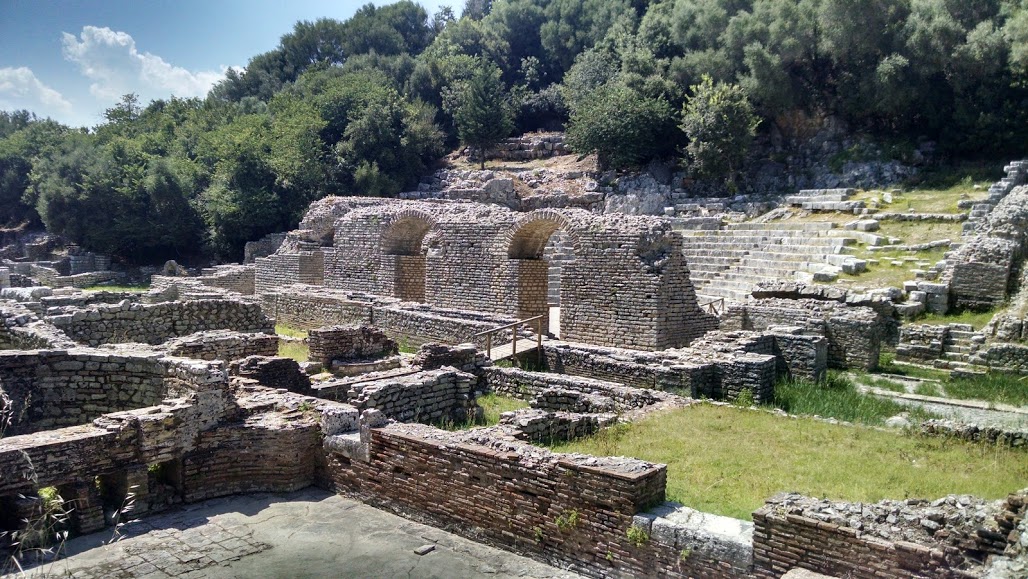
I am particularly fascinated with Asclepius, who I first encountered on the island of Epidaurus in Greece on a previous Biketours.com tour. Asclepius is regarded as the God of Healing, by virtue of being the son of Apollo and the human princess Coronis, but who incited the wrath of Zeus (who would have been Asclepius’ grandfather). Zeus struck Asclepius dead with a thunderbolt because Asclepius had the audacity of cheating death – Asclepius used his powers of healing to restore people to life, usurping Zeus’ power. To me, though, Asclepius is the first doctor, the first to use the scientific method – testing what worked and what did not; he kept notes and refined his technique. (The medical symbol still used today is the staff of Asclepius.)
In this period of time, though, “medicine” or “healing” was all wrapped up with spiritualism (faith). So, just like at the temple at Epidaurus, Butrint has a great amphitheater because Greeks believed in the connection between spiritual, emotional, mental and physical health (theater as well as athletics were part of religious experience).
The sick usually had to spend one or more nights in Asclepius’ sanctuary so that remedy for their ailment could be revealed in their dreams. Priests and physicians would perform rituals to interpret their dreams so an appropriate cure or treatment could be devised (or surmised).
We come to the remains of a really magnificent Roman Forum – it is astonishing to learn that it was only unearthed as recently as 2005.
We go by a structure that is thought to be a gymnasium (a high school, still the word that is used in Albania today for high school).
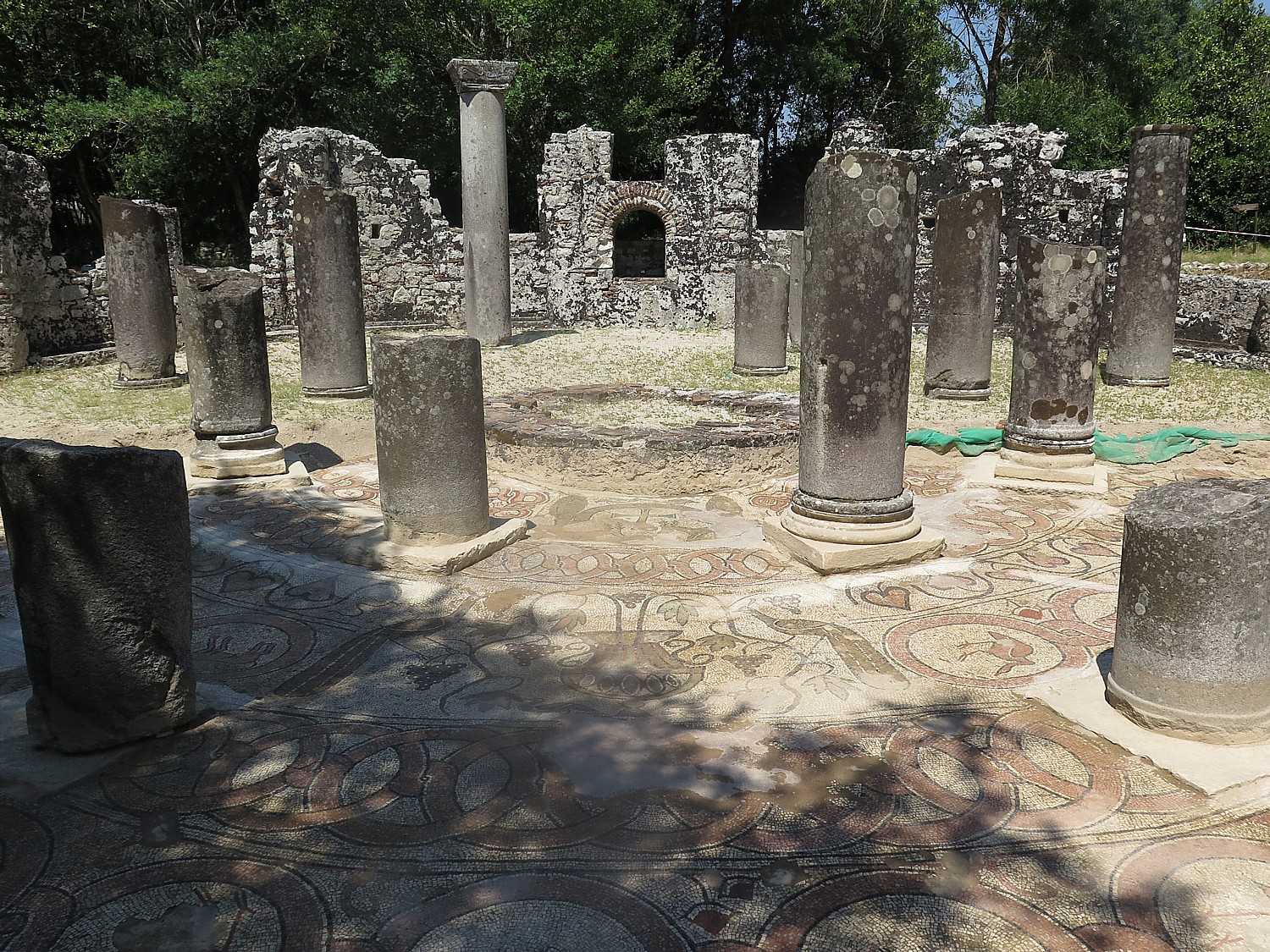
We come to the Baptistry and Junid, points out the mosaic floor (partially exposed). The use of mosaics, he says, meant that it was a place of importance. It was designed in a series of eight circles (we see the columns). Junid notes that the mosaic is usually covered with sand and the only reason we are fortunate enough to see even part of the art is because workers are changing the sand.
We walk further through the forest path and come to the Basilica, constructed in 6th century, which Junid notes has an altar facing east.
The historic markers (in English), are really well done.
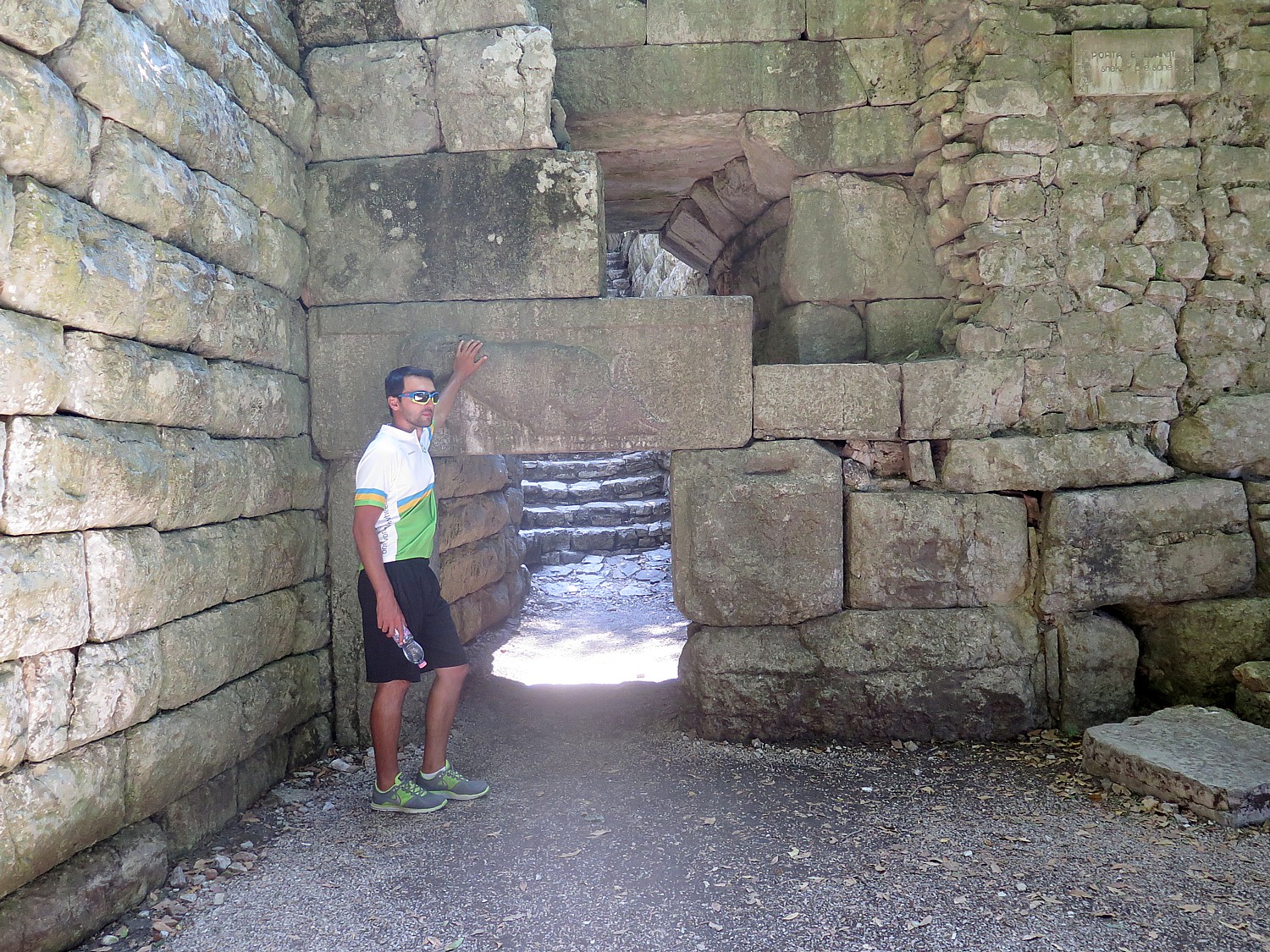
We come to the Lake Gate, a beautiful setting on the water, then walk through the woods again, along the outer fortress wall, until we come to Lion’s Gate – where there is a big stone with a relief of a lion devouring a bull’s head. Junid notes the odd position and how the boulder stands out from the rest – an indication that the stone may have been taken from a temple (but that doesn’t answer why it was positioned too low for a door frame).
Remarkably, only half of Butrint has been excavated so far. “They want to leave something for next generation of archeologists,” Junid tells us.

Finally we come to the Butrint Museum, situated in the Acropolis castle (and what a setting this affords, with a view out to the water).
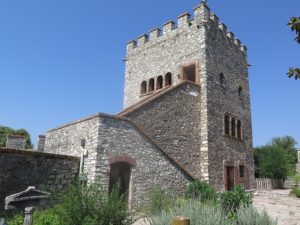
The museum was established in the 1950s to house the finds from Italian archeologists who first excavated 1928-40. In 1988, the museum was enlarged, and in 2005, it was completely renovated, updated and reopened under the aegis of the Albania Institute of Archeology, Butrint Foundation, AG Coventis Foundation, Packard Humanities Institute and Butrint National Park.
The museum is absolutely astonishing – it presents a chronological overview of the history of Butrint starting from the Bronze Age to the Late Middle Ages, and displays artifacts that have been uncovered from the archaeological digs.
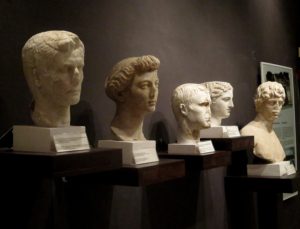
In 1992, the ancient city was designated a UNESCO World Heritage Site. Butrint is also a national park comprising 9400 hectares and since 2003 has also been designated a wetland area of international importance (RAMSAR area). There are some 800 kinds of plants among them 16 which are considered endangered and 12 as rare; 246 species of birds; 105 species of fish and 39 species of mammals.
Admission is 700 Lek for foreigners (about $7). (National Park of Butrint, Saranda, Albania, pkbutrint@yahoo.,com, www.butrint.al)
There are still some scheduled departures left this year for “Albania’s UNESCO Sites with Rivers, Valleys, and Gorges,” 9 nights, Level 4, averaging 37 miles/day (950E or about $1050) (www.biketours.com/albania/albania-UNESCO-tour).
BikeTours.com 1-877-462-2423 or 423-756-8907, 1222 Tremont St., Suite 100, Chattanooga, TN 37405, biketours.com.
See also:
Biking Albania: Exploring Heritage Sites of Lake Ohrid, St Naum, Ancient City of Ohrid
Biking through Albania’s ‘Breadbasket’ into Korca, the ‘Paris of Albania’
Biking Albania: Farm, Thermal Springs on Route through Countryside into the Mountains
Biking Albania: Touring Centuries Old City of Gjirokaster
Next: Biking Albania: Saranda & the Albanian Riviera
____________________
© 2016 Travel Features Syndicate, a division of Workstyles, Inc. All rights reserved. Visit goingplacesfarandnear.com and travelwritersmagazine.com/TravelFeaturesSyndicate/. Blogging at goingplacesnearandfar.wordpress.com and moralcompasstravel.info. Send comments or questions to FamTravLtr@aol.com. Tweet @TravelFeatures. ‘Like’ us at facebook.com/NewsPhotoFeatures

